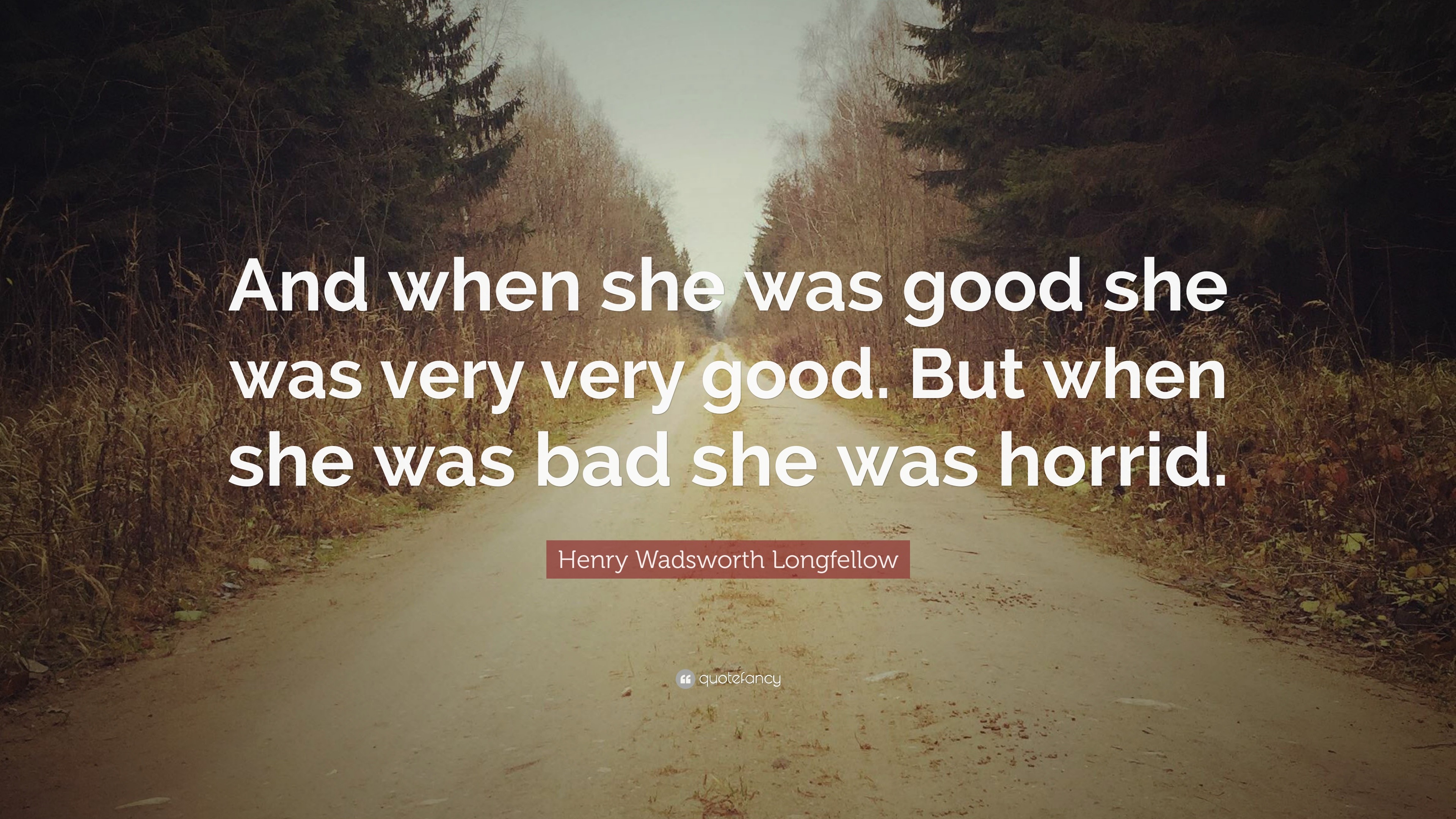In the ever-evolving tapestry of human expression, few phrases resonate with the same evocative punch as “When she was good, she was very good.” This saying, often recited with a hint of nostalgia and warmth, encapsulates the complexities of character, morality, and the inherent duality within us all. Here, we will delve into the origins, implications, and broader meanings of this aphorism while playfully challenging the reader to reflect on their interpretations.
Origins of the Phrase
The phrase itself can be traced back to the mind of the esteemed poet Henry Wadsworth Longfellow, whose reflections often danced between the realms of joy and sorrow. Longfellow’s works encapsulated the human experience, and through this particularly poignant observation, he adeptly highlights the contrasts present in human nature. It begs an exploration of what it truly means to be “good” and whether goodness is an absolute trait or a fluctuating quality dependent on context.
Decoding ‘Goodness’
To engage with the phrase meaningfully, one must grapple with the concept of goodness itself. What defines a person’s goodness? Is it their actions in public, their intentions in private, or a carefully curated persona? This ambiguity opens the door to myriad interpretations. One might argue that goodness is a spectrum marked by the individual’s choices and circumstances. Others may contend that it is a binary trait—exemplified by the stark contrasts of heroism and villainy.
Therefore, when examining the phrase, consider: What instances or actions come to mind when reflecting on a person’s goodness? For instance, might it be that one who is nurturing and compassionate in familial settings exhibits a different facet of themselves in competitive environments? This notion accentuates the significance of environment and context in shaping our behaviors.
The Duality of Human Nature
Longfellow’s insight acknowledges the duality inherent within the human psyche. It posits the idea that people can embody both light and shadow, reflecting various shades of character. To ask oneself, “What does it take for someone to be ‘very good’?” invites an introspective journey. It challenges you to recognize that human beings are rarely one-dimensional. An individual can be kind-hearted, yet fraught with insecurities or flaws. They might engage in acts of benevolence in one moment and then falter in another.
Examples Through Literature and History
As we journey through literature and history, countless figures embody this duality exemplified by Longfellow’s phrase. Take, for example, the character of Elizabeth Bennet from Jane Austen’s “Pride and Prejudice.” Elizabeth is portrayed as a woman of wit and principle, embodying goodness through her intelligence and integrity. Yet, her quick judgments occasionally lead her astray, illustrating the notion that one can be “very good” in some respects while still grappling with misjudgments.
Similarly, examining historical figures such as Mahatma Gandhi raises intriguing questions about the complexities of character. Gandhi is celebrated for his principles of non-violence and civil disobedience, showcasing his dedication to justice and peace. However, his personal relationships and specific political stances reveal facets of his character that may not align with a universally “good” label. The exercise becomes one of discerning the multifaceted nature of humans—embracing their strengths while acknowledging their shortcomings.
Reflecting on Personal Experiences
The challenge posed by the phrase extends beyond literature and historical figures to our everyday lives. Consider your personal anecdotes. Reflect upon those around you. Who comes to mind when you think of someone who is “good”? Are there attributes they possess that inspire you? Do they possess a certain charm during moments of kindness that seems to fade during darker times?
In pondering personal connections, it becomes evident that you too harbor complex natures. Think back on your behavior. Have there been instances when you acted kindly while simultaneously losing your patience? The internal dichotomy is a common human experience deserving of acknowledgment.
The Impact of Cultural Context
Furthermore, the perception of goodness varies across cultures and eras. In some societies, collective well-being takes precedence over individual success, leading to different interpretations of what it means to be “good.” In contrast, individualism celebrated in several Western cultures may cultivate a different metric for assessing character and action. Hence, understanding cultural context is essential for a holistic interpretation of the phrase.
Ultimately Embracing Complexity
The notion embedded within “when she was good, she was very good” serves to remind us that goodness is not an unblemished, straightforward quality. It embodies a blend of human experiences, strengths, and follies. To navigate the world recognizing this complexity encourages compassion for ourselves and others. Instead of casting judgment or prioritizing absolutes, consider the duality you and those around you possess.
Conclusion: Take the Challenge
In conclusion, the phrase invites us to challenge our perceptions of goodness continually. It calls for reflection on how we assess the character of others—and ourselves. So, here’s the challenge: as you go about your day, pay attention to the moments that reveal both the goodness and fallibility of those you encounter. Reflect on your actions, and allow this exploration to deepen your empathy and understanding of the human condition. After all, recognizing the multifaceted aspects of goodness enriches our interactions and contributes to a more compassionate society.

